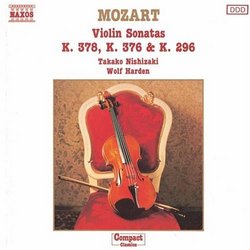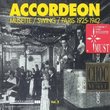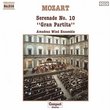| All Artists: Mozart, Nishizaki, Harden Title: Violin Sonatas Members Wishing: 0 Total Copies: 0 Label: Naxos Original Release Date: 1/1/1988 Re-Release Date: 2/15/1994 Genre: Classical Styles: Chamber Music, Historical Periods, Classical (c.1770-1830), Instruments, Strings Number of Discs: 1 SwapaCD Credits: 1 UPC: 730099506526 |
Search - Mozart, Nishizaki, Harden :: Violin Sonatas
 | Mozart, Nishizaki, Harden Violin Sonatas Genre: Classical
|
Larger Image |
CD DetailsSimilar CDs |
CD ReviewsThe Heaviness of Being? Leslie Richford | Selsingen, Lower Saxony | 09/04/2004 (3 out of 5 stars) "This recording, made in Frankfurt/Germany in 1982 and 1983, brings together two rather distinguished instrumentalists. Takako Nishizaki, Japanese-born wife of Naxos-founder Klaus Heymann, has established quite a reputation for herself with her performances and recordings of music by Fritz Kreisler, of popular Chinese violin concertos and, more recently, of violin concertos by the 18th century composer-violinist St. Georges. Wolf Harden, who was only 21 years old when this CD was recorded, is a founder-member of the critically acclaimed Fontenay Trio. Here they play three of Mozart's sonatas for keyboard and violin published in 1781, just after Mozart had secured his dismissal from the services of the Archbishop of Salzburg and moved to Vienna to find his fortune there as performer-composer.
The music is indisputably superb, and there is some excellent playing to be heard from both instruments. There are, however, some issues that prevent me from getting over-enthusiastic about this disc. On the purely musical side, I feel that Takako Nishizaki, in particular, takes these sonatas a little too seriously. She treats them very intensively, as though they had been written in the 19th century by a romantic genius. That is very respectful, but I hear music here, particularly in the closing fast movements, that is full of gusto and needs to be interpreted with a touch (or more) of lightness and humor. I have the impression that Wolf Harden would have played that way if his partner had been so inclined, for he is obviously a sensitive accompanist. Unfortunately, he has not been treated too well by the engineers here: His piano is situated far to the right, and the left hand sounds somewhat muffled; it is obvious that Takako Nishizaki is supposed to be the star here, although Mozart actually wrote for piano with violin accompaniment. The violin itself is clearly recorded, although I sometimes had difficulty in pinpointing exactly where Miss Nizishaki was standing (more to the left, or more in the center?). Perhaps it is worth adding that the sound as a whole is acceptable, but needs excellent hifi-equipment to make listening a pleasure; inferior equipment will have the piano, in particular, sounding rather muffled. Note made on 20th October 2005: Having scratched my copy of this CD to the point where my CD player refused to play it, I ordered a new copy and have since spent some time re-listening to the disc on some excellent new hifi equipment. My feeling now is that I judged a little harshly first time round: Although the point about "humour" is not entirely unjustified, I found myself admiring Ms. Nishizaki's delectable violin tone more and more as I listened. And the problems with the sound of the piano seemed to have disappeared, the only unusual feature being that the piano is heard chiefly through the right channel, a somewhat monaural experience. But especially in view of the low price of this CD I think I must add that the quality is amazingly good and deserves more praise than I was prepared to give it a year ago." |

 Track Listings (9) - Disc #1
Track Listings (9) - Disc #1

